Which Ed Next articles were most popular in 2011? What follows is a countdown of our top 20 articles, measured by page views.
Several of the articles take readers inside classrooms to see how some much-vaunted policies and innovations (e.g. differentiated instruction, blended learning) are working in practice. Several other top articles look at how the performance of U.S. students compares to that of students in other countries. Quite a few relate to teacher effectiveness and compensation. Only two of the top twenty articles focus on technology and learning.
Which Ed Next authors penned the most articles in our top 20 list? Eric Hanushek leads the pack with 4, followed closely by Ludger Woessman with 3 articles. Paul Peterson, Mike Petrilli, June Kronholz, and Michael Podgursky all wrote 2 articles in the top 20.
While most of the articles on our list were published in 2011, some are oldies that generated new interest this year (including two articles from our archives about teacher pensions and other benefits).
Here are the top 20 articles for 2011:
 20. “Gender Gap: Are boys being shortchanged in K-12 schooling?”
20. “Gender Gap: Are boys being shortchanged in K-12 schooling?”
by Richard Whitmire and Susan McGee Bailey
In this forum, two experts consider whether, after years of concern that girls were being shortchanged in male-dominated schools, boys are now the ones in peril.
 19. “Merit Pay International: Countries with performance pay for teachers score higher on PISA tests,”
19. “Merit Pay International: Countries with performance pay for teachers score higher on PISA tests,”
by Ludger Woessman
This study finds that student achievement is significantly higher in countries that make use of teacher performance pay than in countries that do not use it.
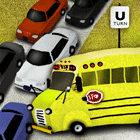 18. “The Turnaround Fallacy: Stop trying to fix failing schools. Close them and start fresh,”
18. “The Turnaround Fallacy: Stop trying to fix failing schools. Close them and start fresh,”
by Andy Smarick
This article reviews the evidence on school turnaround efforts and concludes that they are not the solution for the nation’s failing schools.
 17. “Academic Value of Non-Academics: The case for keeping extracurriculars,”
17. “Academic Value of Non-Academics: The case for keeping extracurriculars,”
by June Kronholz
This article looks at links between student involvement in afterschool activities and academic achievement.
 16. “An Effective Teacher in Every Classroom: A lofty goal, but how to do it?”
16. “An Effective Teacher in Every Classroom: A lofty goal, but how to do it?”
by Kati Haycock and Eric Hanushek
In this forum, two experts debate the best ways to identify effective teachers and to increase the number of effective teachers in high-poverty schools and communities.
 15. “Teacher Retirement Benefits: Even in economically tough times, costs are higher than ever,”
15. “Teacher Retirement Benefits: Even in economically tough times, costs are higher than ever,”
by Robert Costrell and Michael Podgursky
This study documents the growing gap between high employer pension costs for public school teachers and lower employer pension costs for private sector managers and professionals.
 14. “Are U.S. Students Ready to Compete? The latest on each state’s international standing,”
14. “Are U.S. Students Ready to Compete? The latest on each state’s international standing,”
by Paul Peterson, Ludger Woessman, Eric Hanushek, and Carlos Xabel Lastra-Anadon
This study found that U.S. students rank 32nd among industrialized nations in proficiency in math and 17th in reading.
 13. “Fringe Benefits: There is more to teacher compensation than a teacher’s salary,”
13. “Fringe Benefits: There is more to teacher compensation than a teacher’s salary,”
by Michael Podgursky
This article examines the ways in which simple comparisons between teacher salaries and salaries of other kinds of workers can be misleading.
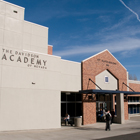 12. “Challenging the Gifted: Nuclear chemistry and Sartre draw the best and brightest to Reno,”
12. “Challenging the Gifted: Nuclear chemistry and Sartre draw the best and brightest to Reno,”
by June Kronholz
This feature story takes readers inside the Davidson Academy, a public school in Nevada for highly-gifted students.
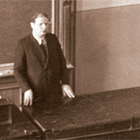 11. “Sage on the Stage: Is lecturing really all that bad?”
11. “Sage on the Stage: Is lecturing really all that bad?”
by Guido Schwerdt and Amelie Wupperman
This study finds that students score higher on standardized tests in math and science when their teachers spend more class time on lecture-style presentations and less time on group problem-solving activities.
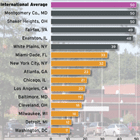 10. “When the Best is Mediocre: Developed countries far outperform our most affluent suburbs,”
10. “When the Best is Mediocre: Developed countries far outperform our most affluent suburbs,”
by Jay Greene and Josh McGee
The first-ever comparison of math performance in virtually every school district in the United States finds that even the most elite suburban school districts produce results that are mediocre when compared to those of international peers.
 9. “The Flipped Classroom: Online instruction at home frees class time for learning,”
9. “The Flipped Classroom: Online instruction at home frees class time for learning,”
by Bill Tucker
This article traces the development of “flipped instruction,” in which students view video-taped lessons or access online material at home and then use class time to work through problems and engage in collaborative learning with their teachers.
 8. “Valuing Teachers: How much is a good teacher worth?”
8. “Valuing Teachers: How much is a good teacher worth?”
by Eric Hanushek
This analysis considers the economic impact of replacing ineffective teachers with effective ones, and estimates the gains to U.S. gross domestic product that would result from boosting academic performance.
 7. “Time for School? When the snow falls, test scores also drop,”
7. “Time for School? When the snow falls, test scores also drop,”
by Dave Marcotte and Benjamin Hansen
This article examines the evidence that expanding instructional time is as effective as other commonly discussed educational interventions intended to boost learning
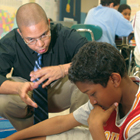 6. “Creating a Corps of Change Agents: What explains the success of Teach for America?”
6. “Creating a Corps of Change Agents: What explains the success of Teach for America?”
by Monica Higgins, Wendy Robison, Jennie Weiner, and Frederick Hess
This study examined the work histories of people leading entrepreneurial organizations in education and found that Teach for America alumni were heavily overrepresented.
 5. “Teaching Math to the Talented: Which countries—and states—are producing high-achieving students?”
5. “Teaching Math to the Talented: Which countries—and states—are producing high-achieving students?”
by Eric Hanushek, Paul Peterson, and Ludger Woessman
This study compares the percentage of U.S. students with advanced skills in math to percentages of similarly high achievers in other countries, and finds that 30 of the 56 other countries participating in PISA have more students scoring at an advanced level.
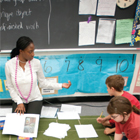 4. “All Together Now: Educating high and low achievers in the same classroom,”
4. “All Together Now: Educating high and low achievers in the same classroom,”
by Mike Petrilli
This feature shows how one school is making differentiated instruction work–challenging every child while avoiding segregating classrooms.
 3. “All A-Twitter about Education: Improving our schools in 140 characters or less,”
3. “All A-Twitter about Education: Improving our schools in 140 characters or less,”
by Mike Petrilli
This article looked at the role Twitter was playing in education policy debates and ranked the top 25 education policy/media tweeters and the top 25 educator tweeters based on their Klout scores.
 2. “Future Schools: Blending face-to-face and online learning,”
2. “Future Schools: Blending face-to-face and online learning,”
by Jonathan Schorr and Deborah McGriff
This feature, an early article on blended learning, profiled several charter schools using the hybrid approach.
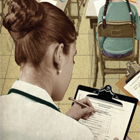 1. “Evaluating Teacher Effectiveness: Can classroom observations identify practices that raise achievement?”
1. “Evaluating Teacher Effectiveness: Can classroom observations identify practices that raise achievement?”
by Tom Kane, Amy Wooten, John Tyler, and Eric Taylor
This study of Cincinnati’s teacher evaluation system finds that the teachers who receive high ratings from trained evaluators who observe them are also more effective at promoting gains in student test scores.
Congratulations to all of our authors, and stay tuned — next Friday we’ll post the top 20 blog entries from 2011.
-Education Next


